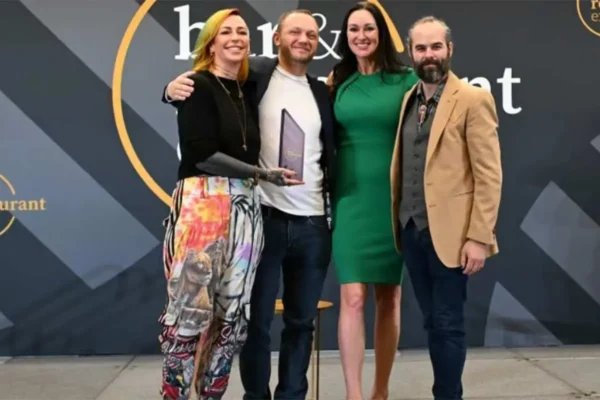Each fall marks the advent of new clothes, sharpened pencils and a new school year. As your TradeShow Teacher, in this September lesson, I am going to present an overview of some basic exhibiting principles and highlight some of my most popular lessons from our 2011-2012 tradeshow curriculum.
“What To Do” RE: ROO
ROO (Return on Objective) enables you and your team to track and prove a tradeshow’s impact when it’s not feasible or as easy to calculate your ROI (return on investment). The best way to do this is to interface with the right attendees while at the show. This could include new prospects, existing customers, assorted media as well as anyone else that could help to further your business. As long as you’ve chosen the right show, you’ll have the ability to meet with more people in just three days than your sales team can meet within months.
Measurable objectives include how many decision-makers you will meet at a show; how many at-show meetings were conducted; how many qualified leads were gathered at a show and defining and gauging sales goals for 30/60/90 days after a show. This information is 100 percent traceable. ROO data should be analyzed and used to guide you in creating an even more strategic, targeted plan for future shows. For more information, visit http://tinyurl.com/d5nnof2
What’s Trending at Tradeshows
From electronic charging stations to bubbles and from QR codes to photo booths and more modern promotional giveaways, it is critical for exhibitors to stay apprised of what’s hot at tradeshows. The cost to create that largely coveted “booth buzz” runs the gamut from economical to extravagant. So whatever your budget is, there is always a way to leave an impression and for your company to reflect that it is in tuned with the market.
Some of these trends also lend themselves to additional objectives such as “going green” and paperless initiatives. Tablet computer devices, such as iPads, have multiple uses such as at-show social media postings, lead gathering as well as serving as excellent tools for booth presentations and demonstrations. For more information, visit http://tinyurl.com/9llogc2
Exhibiting Etiquette
Much of exhibiting etiquette is plain old common sense, so the first step is to follow your most basic professional instincts. When it comes to dress codes, always cater to your audience. Dress professionally yet accessibly. It is always a good idea to follow your company’s corporate color scheme and to easily be able to go from day exhibiting to evening networking by simply adding a blazer, a change of shoes or, for ladies, additional accessories.
Also, be sure to be competitive and creative when it comes to promotional giveaways, and thank-you gift cards for vendors, workhands, and staff are always a nicely added touch. Tattoos and non-traditional piercings should be obscured at shows where a corporate and cohesive image reigns supreme. Last but not least, alcohol consumption, while generally popular at such events, should be kept to a minimum as to avoid potential embarrassment. For more information, visit http://tinyurl.com/8eb8l47
Tradeshow Award Opportunities
Tradeshow awards and “best of” honor opportunities are available at many shows, and identifying and locating them is generally as simple as combing through the show’s website or promotional literature. Rules, eligibility guidelines, fees and deadlines for such submissions generally are outlined, and it is essential that they are adhered to by participating exhibitors. The most important part of winning such awards and recognitions is to not simply bask in the glory of victory but to leverage the honor by sending out press releases and using the “winning” title in a graphically designed “seal” to use on future company literature and collateral. Tradeshow media often do profiles and feature stories on the winning exhibitors, who can forever use the “best of” designation as a qualifier when quoted by media in future industry publications. For more information, visit http://tinyurl.com/9ph5qda
Tradeshows and Social Media
Social media, a form of integrated marketing communications, is a group of Internet-based applications that allow the creation and exchange of user-generated content. Building a social media “following” is a function of joining the appropriate media sites, such as LinkedIn, Twitter and Facebook, and then simply reaching out and exchanging information just as one would do at a physical networking event.
On Facebook and other sites, a business can build a profile with all pertinent information and use their “wall” as a platform to post updates, promotions, photos, videos and of course, details regarding tradeshow activity. Show participation should be posted approximately six months in advance, following up with periodic reminders and other-show related news before, during and after the exhibition. Take advantage of the opportunity to publicize contests, presentation schedules as well as giveaways, and when it’s all over – tradeshow success! Don’t forget to always acknowledge others in your social media network by posting and “liking” posts on others’ walls as well as replying and acknowledging those who have commented on yours. For more information, visit http://tinyurl.com/9qgzesq
Tradeshow Selection
With the economy still in a questionable state, it is more important than ever for exhibitors to be extra diligent and “selective” when choosing in which trades shows to participate. The first step is to make sure that your profile of key prospects is aligned with the attendee prospectus provided by the show producer. Also – always question your motives of participating in a show by answering a basic list of W’s – Where (destination of show)? When (show is taking place)? Why (exhibit)? Who (will be attending and exhibiting)? Scour the Internet for both traditional and tradeshow search engines which provide all the aforementioned details. Other places to locate tradeshow schedules are through industry associations and publications; convention centers, visitors bureaus and chambers of commerce. And, students – keep a keen eye on the competition and don’t forget there are always advantages and disadvantages of exhibiting at the same show as them. For more information, visit http://tinyurl.com/9x4dft3
Homework
• Sharpen your pencils and review past tradeshow lessons.
• Prepare for a new year of tradeshow education from your TradeShow Teacher.
About Linda Musgrove, The TradeShow Teacher
Linda Musgrove is founder and President of TradeShow Teacher, a full-service tradeshow training and management firm. Through her result-driven formula, she specializes in teaching companies to significantly improve tradeshow results through strategic, customized tradeshow management and training for individuals, departments or entire teams. Training options include phone consulting, webinars, seminars and one-on-one in person coaching. Musgrove authored “The Complete Idiots Guide to Trade Shows,” published by Alpha Books/Penguin Publishing. Learn more at http://www.tsteacher.com and follow on Twitter at: http://twitter.com/tsteacher































